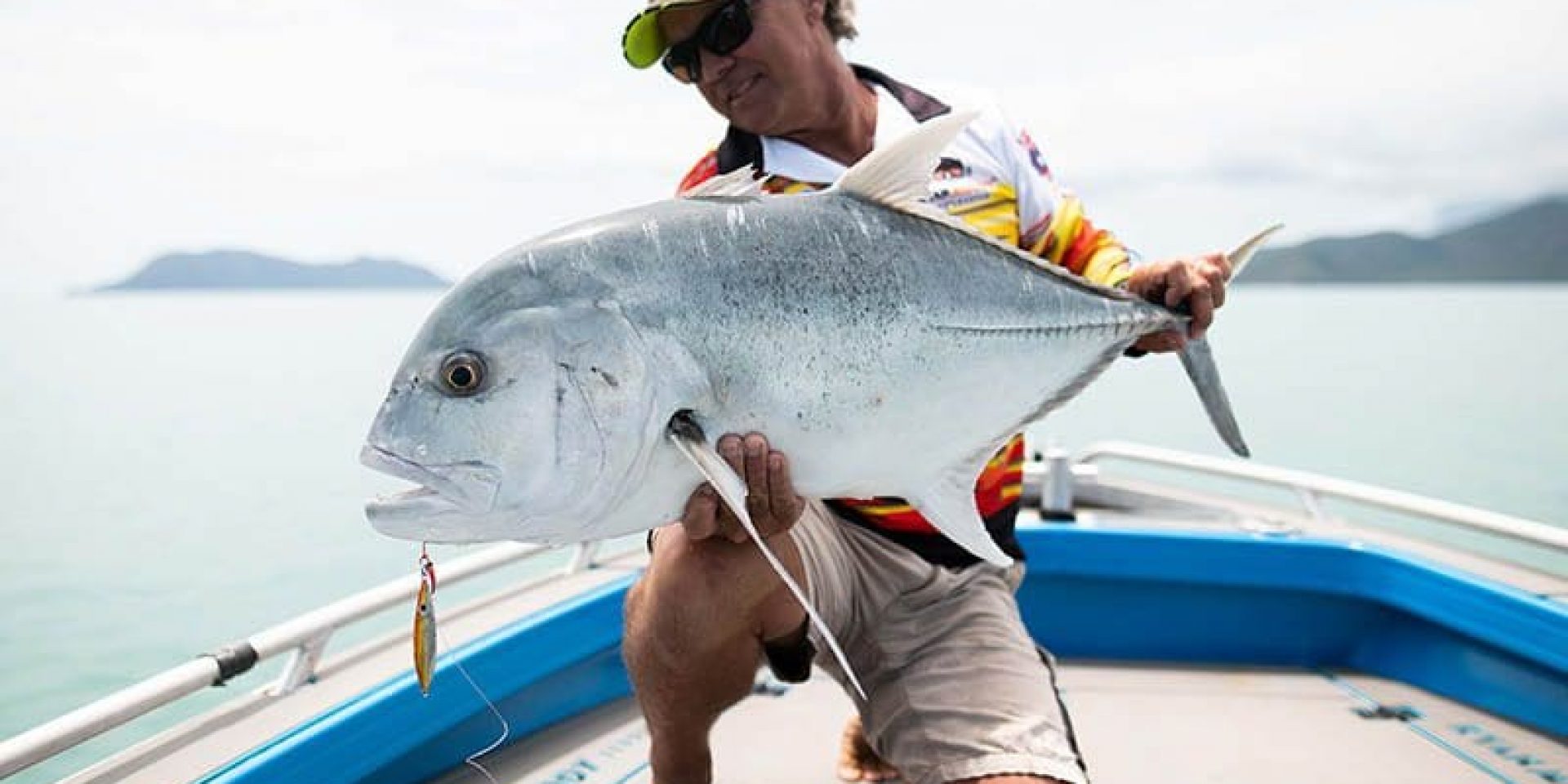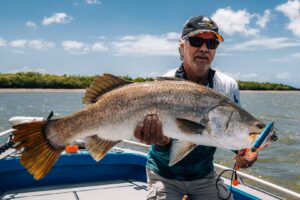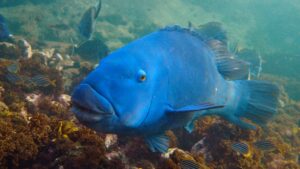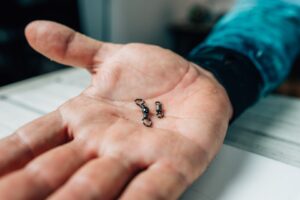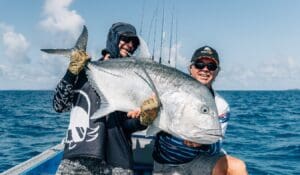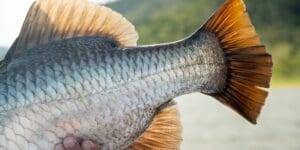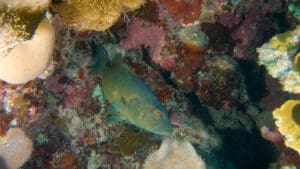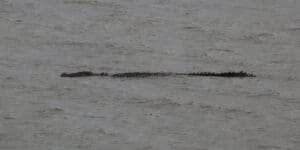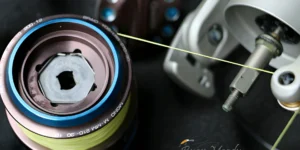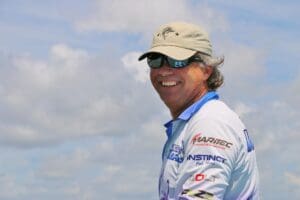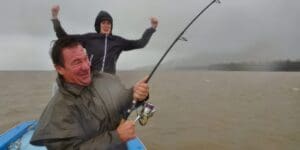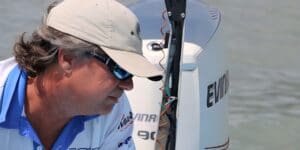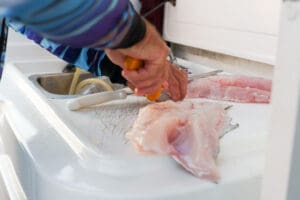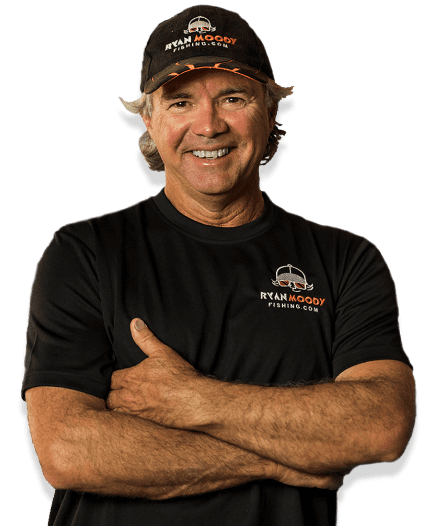Stocking trevally in barra impoundments is a hot topic of late, but do YOU want to catch fish like this GT in a stocked dam?
A lot of questions come to light when thinking about this issue.
Most common being – why trevally and not mangrove jacks or jungle perch?
Will they even survive in freshwater?
And most importantly, will they hunt in packs, wipe out the bait fish, and starve out the big resident barra we so love to catch?
Fisheries would like to stress from the get-go, that this project is simply to have trevally approved as a stocked fish option.
Stocking groups will be under no obligation to use them.
So if the stocking of trevally in barra impoundments is a big issue for you, please join and support your local stocking group.
I’m sure they can do with the extra help and you can have your say directly.
We met with Qld. Fisheries to discuss stocking trevally in barra impoundments.
In August 2024 we were lucky enough to be granted a meeting with Dallas D’Silva the Executive Director of Qld. Fisheries, some of the scientists working on the project from the Bribie Island Research Facility, and some other relevant stakeholders including Councillor Allison Jones from Mackay Regional Council.
The presentation was delivered by Dr. Michael Hutchison of DAF.
Background
The idea to stock trevally in impoundments started around 15 years ago to provide a diversity of fishing options in impoundments and enhance recreational fishing tourism. Stakeholder groups including recreational fishers were tasked with creating a list of possible options.
Twenty or so species were listed and were assessed on a few criteria. Obviously, they must be easy to breed in captivity, grow quickly to avoid fingerlings being eaten by ravenous barra already stocked in the dam, and be present in the system in case they escape.
In the end, the main four considered were Jungle Perch, Mangrove Jacks, Giant Trevally, and Big-Eye Trevally.
Unfortunately, jungle perch grows too slow and jacks are expensive to breed, leaving GT and Big-Eye trevally as the main contenders.
Both these trevally species are already bred successfully in captivity and are a cost-effective option.
They are also found in the freshwater sections of systems in North Queensland.
We have certainly caught GT in the estuaries and they are known to venture into the fresh.
- Smashed by a big GT in the Port Clinton estuary system.
- Catching Giant Trevally in the creeks of Hinchinbrook.
The project sat on the back burner for a decade before renewed interest in the last 5 years has reignited the topic.
Risk Assessement in Kinchant Dam
Before stocking trevally in barra impoundments, they must be passed as an approved fish species for stocking.
Trials will soon be underway to assess how both these species affect current dam ecosystems.
The trials are funded by the FRDC (Fisheries Research and Development Corporation) and you can read more about the stocking trevally in impoundments 2022-155 FRDC project here. So no SIPS money is not being used to fund this research.
Kinchant Dam has been selected for the main trial as it is 1. Warm enough (close to the coast) and 2. Small enough to allow recapture of trevally for assessment purposes.
Fisheries scientists have already begun assessing bait numbers in around the dam in about 40 locations. They do this via electrofishing.
These same areas will be assessed after the release of the trial fish for 3-4 years.
The trevally will also be assessed during the trial via gastric lavage.
Basically, this means the fish’s stomach contents can be flushed out to see what they are eating.
This is a non-lethal procedure although it doesn’t sound very pleasant for the fish!
Kinchant was also chosen as bait fish are very abundant.
Although one of the concerns is that, unlike barramundi, big-eye trevally hunt in packs like velociraptors. And the concern is they will decimate the bait in the dam to the detriment of the barra.
Angler Feedback
Justin Webber from Headwaters Art and Angling Co. in Mackay has advised that customers of his business have expressed alarm.
He advised that the Kinchant Dam barra fishery is a fishery in decline due to smaller fish sizes being captured.
It is the general consensus among Mackay barra fishers that they do not want trevally in the dam.
Angler feedback to Fisheries at the recent AFTA trade show was positive for trevally in dams.
The good news is that stocking groups will be able to choose or decline trevally for stocking in impoundments, if and when they become an approved species. They will simply add to the mix of approved species for stocking groups. No group will be forced to take them.
It should be noted that in Victoria, over 10 million fish have been stocked to create different recreational opportunities for anglers.
Queensland is a big state with many bioregions and when people go fishing they spend their money locally.
The goal of fisheries mangers is to provide additional opportunities to grow freshwater fishing.
Initial Release
Only a small number of fish (2500-3000) of each species will be released.
This is because they want to be conservative for the trial.
Trevally DO NOT BREED in impoundments, hence we won’t have a cane toad epidemic on our hands in years to come. The trial stocking trevally in impoundments is fully reversible.
All the brood stock to parent the hatchlings has been collected.
Fisheries will be trying to spawn these fish from November and if successful, fingerlings will be available 6-8 weeks after that.
The fingerlings will be microtagged in different colours based on age so recaptures can determine how quickly they grow.
Fisheries will also be invoking “citizen science” to help assess impacts via boat ramp surveys and questionnaires to stocking groups.
Acoustic Tagging in Awoonga
In order to further assess the impact of these fish, 20-30 larger fish of each species will be released into Awoonga Dam.
These fish will be acoustically tagged to assess their movements around the dam.
Of particular interest is their movements further up into the catchment.
Because they want to ensure they are not going to move upstream and wreck havoc with the delicate ecosystems and native freshwater fish species further up.
These same risk assessments were done on Barra before they were approved.
Barra were found to stay in the dam, hence their approval as a stocked species.
Genetics
The trevally stocks have been assessed to ensure those used as brood stock, are not actually a different stock.
Because fish move, we can’t always tell by looking at them.
Turns out that the trevally in SEQ and FNQ are the one interbreeding stock.
This means that brood stock is easy to collect. And also if they escape into the salt to breed (perhaps in a flood event), the stocked fish will not interbreed outside of their natural area.
Dam suitability
Even if they are approved as a stocked species, trevally will only be suitable in a handful of dams.
Kinchant is the smallest dam they would be suitable for due to their pelagic swimming habits.
And dams nearer the coast will be more suitable due to the warmer temperatures required.
Success as a target species
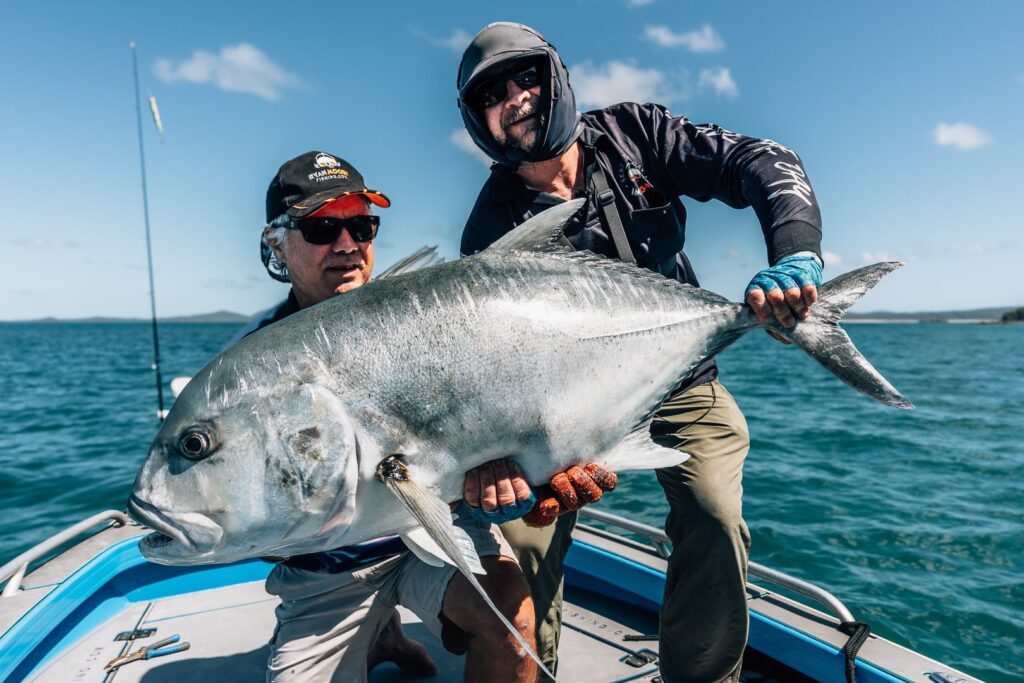
The ultimate aim for stocking trevally in barra impoundments is to provide choice to stocking groups and recreational anglers.
Of course, it remains to be seen whether they will be successful as a target species.
Trevally, especially big-eye, tend to hunt in packs. We don’t know yet how they will distribute themselves around the dam. Thus some anglers may have a field day, while others miss out completely.
This may also create a competition among boats jostling for position to fish on the school.
Whereas barra aggregate at times, but also can be found in other areas.
Dams with large weed concentrations may also prove problematic due to the different fighting styles of barra and trevally.
Barra tend to jump around on the spot and fight in one area (although they can also take to the weeds requiring unorthodox methods to free them).
Trevally stocked in barra impoundments, however, will most likely run in a straight line and power through heaps of weed.
How much braid will be lost, littering the dam?
Early days stocking trevally in impoundments
In conclusion, it’s early days.
We don’t fish the dams that often so we would rather leave the opinions to those more affected.
We can certainly see the concerns. However, Fisheries Qld. did do a good job addressing many of them.
I guess now it just remains to be seen.
Worst case scenario during the trial, they can be fished out by electrofishing and angler efforts to remove them from the dam.
If deemed suitable and stocking commences the worst case scenario then is that 10 years plus adult fish start exhibiting different behaviours.
Or the real effects of the bait from hordes of large adult trevally is different from the conservative trial stocking.
Fisheries Qld is certainly aware of the risks and tried to mitigate those risks.
But at the end of the day, it is up to the stocking groups. So if you feel strongly about this matter, it’s time for you to get involved locally.
We really appreciate the invite from fisheries and hope to keep the lines of communication open. The Mackay Area Fish Stocking Association (MAFSA) is a good place to start.
Shark update
We hope to be meeting with Fisheries and the scientists involved in shark depredation research in the coming months.
Apparently, there is some new federal funding to research depredation and we hope to find out about that soon.
The scoop is a shark fishing review that may be pending after the election.
Liberal members have reached out to us and met with us regarding this issue. Bree James, Annette Swaine, Senator Susan McDonald and Shadow Fisheries Minister Tony Perret.
Not wanting to get too political, but to date, no Labor members have done the same.
Jump on our mailing list to keep up to date with these kind of issues.
Plus tips, tricks, and free training. You can sign up below.


